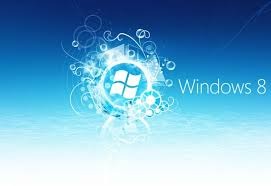Understanding the Windows 8 ei.cfg File
When it comes to configuring and customizing Windows operating systems, especially during installation, there are a few key files that play a significant role. One of these is the ei.cfg file. If you’re dealing with Windows 8 ei.cfg File installations, understanding this file can help you unlock more flexibility in the way you install and manage your OS. In this blog post, we’ll dive into what the ei.cfg file is, its purpose, and how you can modify it to suit your needs.
What is the ei.cfg File?
The ei.cfg (Edition Configuration) file is a configuration file found in the Windows installation media, particularly in the “sources” folder. This small text file controls which edition of Windows is installed by default during the setup process. In Windows 8, as with Windows 7 and 10, the ei.cfg file allows users to define the Windows edition (like Home, Pro, or Enterprise) and other installation behaviors, such as whether the product key is required during the installation process.
Why is the ei.cfg File Important?
The ei.cfg file offers a level of customization for users and system administrators who need to install Windows on multiple systems. It eliminates the need to manually choose an edition during setup and can simplify the installation process. For example, if you are deploying Windows 8 ei.cfg File in a business environment where you need to install the Pro version on all computers, the Windows 8 ei.cfg File can automate that selection.
Additionally, modifying the ei.cfg file can unlock hidden editions of Windows that may not be presented by default during the installation process. It also makes it easier to bypass the need to enter a product key during installation, though you will still need a valid key to activate the system later.
How to Modify the ei.cfg File
Modifying the ei.cfg file in Windows 8 is relatively simple. Below are the steps to follow if you want to customize the installation:
Step 1: Access the Windows Installation Media
First, you’ll need access to the Windows 8 ei.cfg File installation media. This could be an installation DVD or an ISO file. Once you have the media, open the “sources” folder located in the root directory of the installation media.
Step 2: Locate or Create the ei.cfg File
If the ei.cfg file exists, you’ll find it in the “sources” folder. If it doesn’t exist, you can create one using a text editor like Notepad.
Step 3: Edit the ei.cfg File
The ei.cfg file has a simple structure. Here’s an example of how it might look:
[EditionID]
Professional
[Channel]
Retail
[VL]
0- [EditionID]: Specifies the edition of Windows to be installed (e.g., Home, Professional, Enterprise).
- [Channel]: Defines the distribution channel, typically Retail or OEM.
- [VL]: Indicates whether Volume Licensing is used. 0 means no, and 1 means yes.
You can modify these fields based on the edition and type of Windows installation you want.
Step 4: Save the File
Once you’ve made the necessary changes, save the ei.cfg file in the “sources” folder. If you are creating a new ei.cfg file, ensure it’s saved with the .cfg extension.
Step 5: Install Windows
Now, proceed with the installation of Windows 8 using your modified installation media. The changes you made in the ei.cfg file will be applied, and the setup will follow the configurations you specified b0d1xqqj13.
Common Use Cases for Modifying the ei.cfg File
- Bypassing Edition Selection: If you know you only need to install Windows 8 ei.cfg File Professional on all your devices, modifying the ei.cfg file ensures that the installation process skips the edition selection step and installs the correct version automatically.
- Bypassing Product Key Entry: Some users or system administrators may want to bypass the product key entry during installation to streamline the process. By adjusting the ei.cfg file, you can skip this step, though you’ll still need to activate Windows after installation.
- Accessing Hidden Editions: Sometimes, certain editions of Windows are not available through standard installation. Editing the ei.cfg file allows you to unlock these editions, providing more flexibility in your OS choices.
Conclusion
The ei.cfg file is a powerful tool for customizing Windows 8 ei.cfg File installations, making the process smoother and more tailored to your specific needs. Whether you’re a home user looking to bypass tedious installation steps or a system administrator deploying Windows across multiple machines, understanding and modifying this small configuration file can save you time and effort.
Before making any changes, always ensure you have a backup of your installation media, and use the ei.cfg file responsibly, as some modifications may require proper licensing.
With this knowledge, you can take full control of your Windows 8 ei.cfg File installations, making the process faster and more efficient.














Post Comment